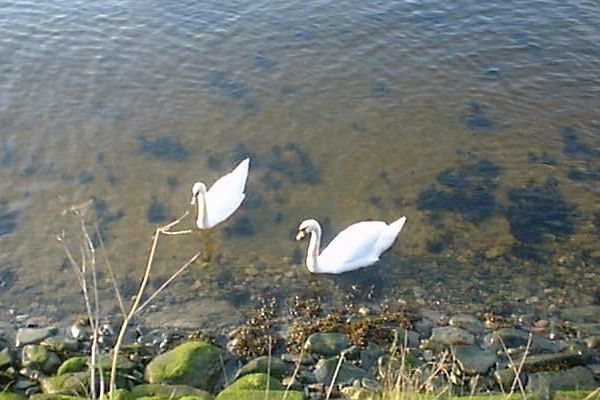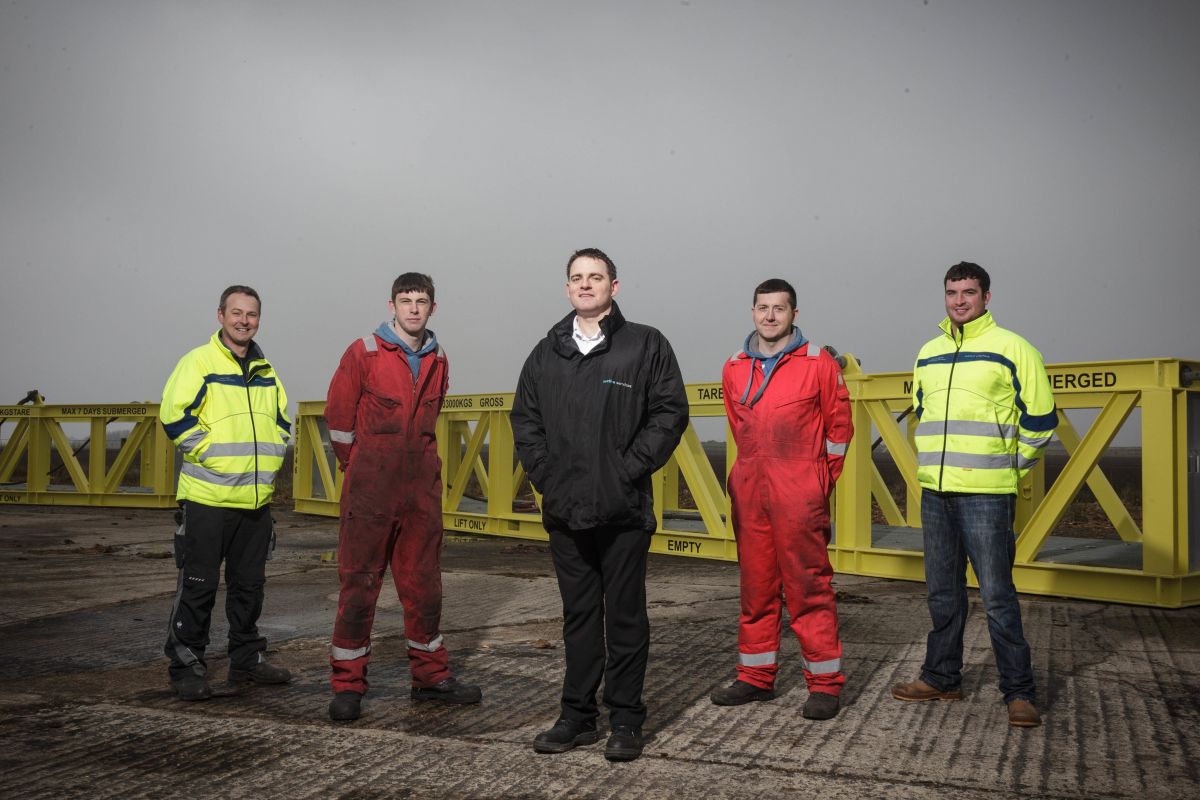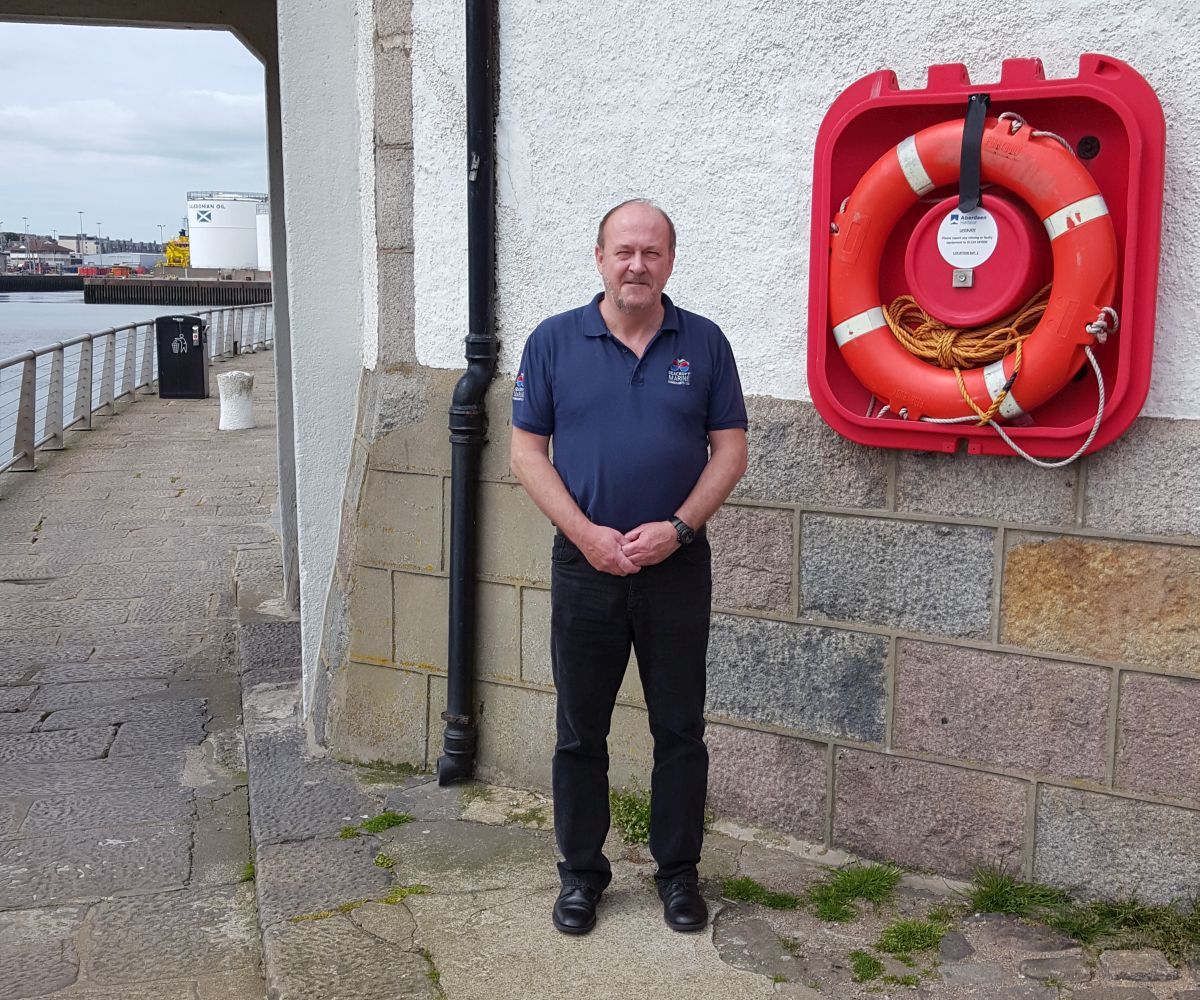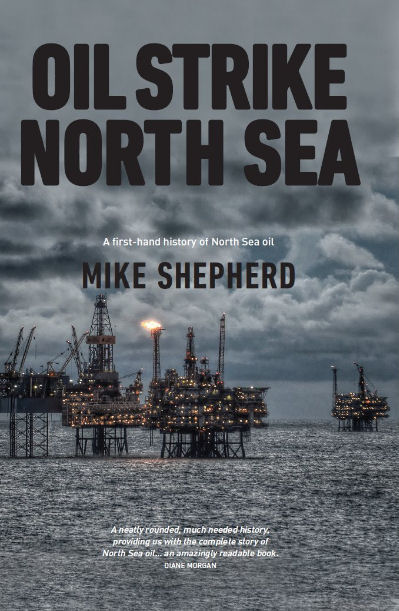A cheerful article in Aberdeen’s free sheet, the Aberdeen Citizen, appeared on the 23rd of October. The piece proclaims that plans to take over Nigg Bay for industrialisation “have today been welcomed by local residents.”
Suzanne Kelly, knowing full well the strength of local opposition to this scheme, looks at the two residents quoted in the piece, and finds the Citizen’s ‘happy’ conclusion somewhat wanting.

Rainbow viewed across the harbour from Torry
The Scottish Government, Scottish Enterprise, scandal-hit again lately over millions given to companies that its board has shares in, and Aberdeen’s Harbour Board want to take over Nigg Bay and significant other greenbelt locations in Torry and
Altens.
They rejected plans to renovate brownfield sites north of the harbour and want Nigg Bay because it is the least expensive option.
They are also worried that other Scottish, or worse, European harbours may expand instead, thereby allowing other communities to gain from shipping instead of just Aberdeen.
All of this is spelled out in the booklet the Harbour Board is dishing out to the public at recent consultations. The booklet is written as if the scheme to take Nigg Bay out of public use is a fait accompli.
It should be noted that the public was never asked to consider the options. The one option we are having foisted on us is to give up the Torry coastline and land. That means giving up our already threatened wildlife and our recreation areas, and it means turning this community into a completely industrialised area.
It is a rare resident of Torry who can be delighted at increased pollution: marine fuel is not refined, and is a serious pollutant. Or at the prospect of increased road traffic , and loss of amenities and environment. So, how did the Citizen come up with a headline and an article so favourable to the city’s business interests?
You can understand a booklet written by supporters of a scheme being slanted, but should the Citizen have produced a more objective, honest piece than the one it printed? According to Aberdeen Journals Ltd., we are happy about this. Well, two of us are happy, anyway. Alan Reid, described as being of the Torry Heritage Group is quoted, and so is another person, Tinotendra Okere.
Many people just glance at headlines, and assume something in print is accurate. This is exactly what a propagandist relies on. The article talks about everything, except air quality, loss of land, increasing industrialisation, increased lorry traffic in Torry, loss of wildlife and wildlife habitat, and further urban sprawl. We are meant to be happy for money and jobs creation, and anything else is a secondary concern.
Alan Reid is interested in the area’s heritage, that is clear (seemingly the built environment is more important to him than the natural heritage, as he is happy to consign Nigg Bay and its two SSSIs to history for potential job creation). He is entitled to his opinion. The article sees fit to mention that he is part of Torry Heritage (one of 1600 members on the Facebook page), but to be clear – he does not speak for the group. The Citizen doesn’t tell us about Tinotendra Okere’s interest,s though it tells us about Reid’s background. If Reid’s background is relevant, than surely so is Okere’s. Researching what her interests may be, it seems Ms Okere may indeed be quite happy about the industrial expansion plan…
‘Happy’ Tinotendra Okere, your average Torry resident who…
… is a journalist and Director of Aberdeen Geophysical Services Limited, a company formed at the end of August this year.

Ms Okere seems to have been involved in many interesting, worthwhile activities and charities. When it comes to the harbour issue, could she possibly have an interest? Perhaps this is just a ‘happy’ coincidence for Aberdeen Citizen’s reporter, but surely one journalist would identify themselves if another journalist approached them for an interview?
Surely it is relevant for the reader to know the happy camper in question is one.
Aberdeen Geophysical Services Limited does not list the nature of its work on its Companies House listing; but from further internet searches, it would seem this company is involved in marine geophysical services: perhaps building in Nigg Bay would be a very happy opportunity for them?
Ms Okere describes herself on Linked In as :-
“I am a focused, self-motivated and determined information and communications professional with more than four years experience. I have been instrumental in the formulation and revision of internal and external communication strategies which have yielded excellent results.
“I have also played an active role in sourcing and contacting potential partners and donors which were key in the success of specific programme areas. Am an excellent and insightful communicator, with experience working in multi-cultural environments and clients of various calibres.”
http://uk.linkedin.com/pub/tinotenda-okere/61/651/8b4
It seems fair to wonder, given her communication and strategy skills, coupled with her business venture, whether she may have an interest in the project going ahead. It is a pity the Aberdeen Citizen article didn’t find time to mention any of this, which undoubtedly its reporter would have learnt as part of her thorough interview at the time.
Alan Reid – maybe not so happy after all? The Citizen quotes Alan as being very pleased by the proposal:
“If it is going to get people jobs and bring money into the area, then it is a good thing. Creating jobs in this day and age is the most important thing…. [it is] vital the development preserved the heritage and history of the area… I hope people still have access to the recreational facilities in the area.
“People should still be able to go out and have picnics by the burn for example. Nothing should be blocked off by gates or security.” – Alan Reid quote, Aberdeen Citizen 23rd October 2014
Alan later advised that he was questioned at the Union Square public display. From his quotes it seems he hasn’t had time to digest everything fully as there will be fenced off areas, it is not just a question of a bit of jetty jutting into the Bay. Aberdeen is not at a loss for either jobs or money and compared to many other parts of the UK is quite strong.
 The harbour will be made deeper, with inevitable consequences for marine life. Further areas of land are wanted, the Bay itself will be out of bounds for people, and the whole coast will be lost for wildlife and recreation. Two Sites of Special Scientific interest (SSSIs) will be compromised. The presentation booklet tells you some of this, but it does not tell you about the SSSIs and wildlife does not get much attention.
The harbour will be made deeper, with inevitable consequences for marine life. Further areas of land are wanted, the Bay itself will be out of bounds for people, and the whole coast will be lost for wildlife and recreation. Two Sites of Special Scientific interest (SSSIs) will be compromised. The presentation booklet tells you some of this, but it does not tell you about the SSSIs and wildlife does not get much attention.
Alan can be forgiven for not digesting the issues on the spot.
Here is what Alan wrote when asked about his position on a Facebook thread:-
“.. as far as I know the bit at the bottom of St Fitticks Road is the area where they will jut out into the sea to the south of that on the Cove Road will be widened much about the same along Greyhope Road. The back bit where the church and burn runs should be okay I know what you’re saying and I agree but when the wheels start rolling the decisions are made.
“You know how the council are, look what happened to the Victoria Road school project once they make up their mind we don’t count. We need to vote these lot out, they don’t care about Torry” – Facebook 24 October
So as well-intentioned as Mr Reid is towards Torry, this statement is hardly a rolling endorsement from a ‘happy’ resident.
The Citizen could have asked him whether or not he had read all the materials; they could also have looked on Facebook where they will find some in favour, and many people against the plans. Here are some recent Facebook quotes; ‘happiness’ is not exactly the word that best sums these feelings up:
“I did notice at last week’s meeting the Harbour guy said that the ‘majority’ of Torry people were ‘happy’ with the plans for the harbour & the work it would promote. There was no mention of the beach, coastline, wildlife or the increase in road traffic unfortunately. Does this mean the majority of the Torry people are unaware of these issues? [quite possibly]”
“Me [sic] personally thinks it would be a great benefit for the city! Nobody really uses that beach anymore anyway”
“I read the same article In the Evening Express. In my opinion I think the expansion would be a disaster to the beautiful scenery away from the bustle of the harbour. We don’t have a lot of natural scenery left and we should preserve/improve on what we have. But in all honesty I don’t think it will matter to the city of our views as Aberdeen has and always will be driven by money…”
“No one cared what Torriers thought of closing a school or demolishing a landmark, this will be no different, it will come down to whose pockets are lined the thickest.”
“The Torry beach is always full of people at the first hint of sunshine!”
“You don’t need to be up a mountain to enjoy the view of the mountain just as you don’t need to sit on the beach to enjoy the scenery. I think it will be a sad day for the city when they destroy this natural Bay Area.”
“They need to sort at god awful stench if they want to entice cruise ships tho! I remember the days of the ice cream shop at the Bay, picking Buckies, camping there etc Harbour Board have spent millions already on this new project, so this ‘Consulting’ with local residents is utter nonsense!!”
Maybe it was the case that the Aberdeen Citizen interviewed scores of people, all of whom were happy. This happiness is clearly not universal.
In due course plans will be lodged that the public can object to. There seems to be no shortage of grounds to do so.
It should be noted the Harbour Board are regularly attending Torry Community Council meetings to update the council on developments: this is all well and good, but since these updates are made by those who want to take over Nigg Bay and several other swathes of land, let’s hope Torry Community Council is actively seeking representatives to update the council on the other side of the coin.
- No doubt SEPA, with offices on the coastline in question, will raise all the environmental objections and take an active part in protecting Torry’s built (lighthouse) and natural (bay, land, wildlife, landscape) heritage from pollution and industrialisation. We will see.Comments enabled – see comments box below. Note, all comments will be moderated.












